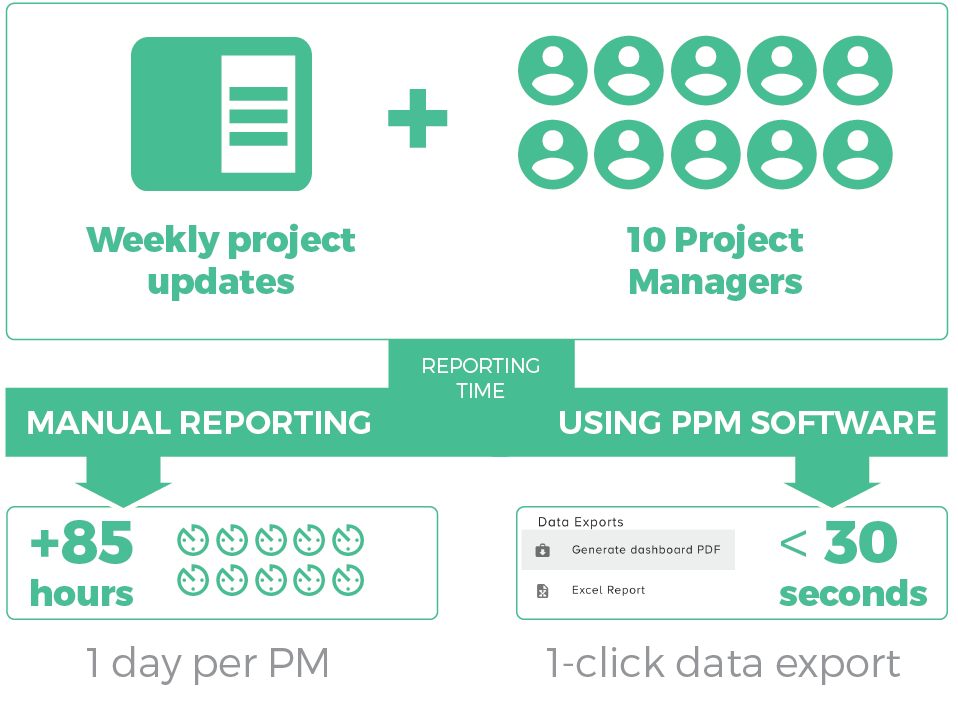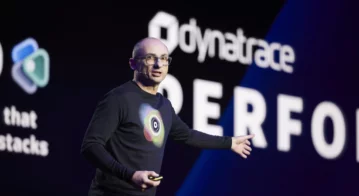
There’s a reason why Consumer Packaged Goods (CPG) organizations are often referred to as Fast-Moving Consumer Goods (FMCG) companies. Launch goals, new product development (NPD) timelines, priorities and even staff churn all seem to move at breakneck speed. In this article we review some of the challenges for teams working in this sector and introduce a software company that’s spent the last 15 years helping CPG clients to systematize and automate the most time-consuming parts of their delivery process.
With economic pressures driving up the costs of doing business, decisions around bringing new products to market are increasingly complex. Without a holistic view of the complete portfolio of work and a focused adherence to good process management, it’s easy for higher-level company goals to get lost in the operational detail of project management activities.
As the financial implications of a wrong turn grow, organizations are starting to revisit the on- and off-line processes that typically develop organically as a company evolves. A bespoke in-house approach may have provided a level of oversight they needed to get going, but the fixed constraints of these solutions eventually conspire to make project management a rigid and somewhat static process. As the business pivots toward new opportunities, its project managers become more constrained by the tools and processes that initially empowered. Attempting to adapt a legacy system often leads to variance in delivery success as teams divert attention to processes that prioritize local needs over the whole. So what can an organization do when it wants to retain consistency and flexibility?
Address the three big elephants in your room
One of the key challenges often faced is achieving a well-executed process flow that’s free of time-critical delays. In CPG or FMCG companies, it’s often not the complexity of project management that most challenges delivery teams – it’s the sheer speed and volume of new delivery projects going through the funnel. Managed properly, your business decision points will be clear, your project milestone dates widely known, your delivery progress tracked, and all risks are understood and mitigated.
Second, team composition is often more fluid than desired. New and enthusiastic Project Managers (PMs) are often fast-tracked beyond their years or experience. Most of the time, this works well. They’re usually well-educated, eager, and quickly up to speed with organizational expectations. However, it can also be stressful for all involved. The project teams have a responsibility to manage variables they sometimes don’t understand. The oversight board, or Project Management Office (PMO), can feel equally overwhelmed. Often its members struggle to know who’s done what, where, and when – let alone the risks that may put project XYZ in jeopardy. That’s a big problem when it comes to delivering on company strategy, especially if your PMs are managing large numbers of projects in ways that their project management tools were never designed to support.
Finally, keeping processes and outcomes aligned across teams has always been a tough job, but the evolution of post-pandemic hybrid work practices has made the collaborative aspect of workflow management not just a ‘nice-to-have’ but an essential.

Source: Shutterstock
Evolving your working practices
The saying goes that “if you do what you’ve always done, you’ll get what you always gotten.” If we accept the solutions that companies relied on in their earlier days (such as standalone in-house solutions or applications like MS Project and Excel) are no longer fit for purpose, we can begin to compile a list of prerequisites to evaluate, control, and deliver projects (or products/services) more quickly and efficiently. Let’s look at the three mainstays of project execution that facilitate a continuous growth in organizational productivity and a more balanced portfolio of projects.
Keep your eyes open: visibility
All project data and status needs to be available in one place to create a coherent overview for an individual project manager. The same place should be where team leaders and decision-makers get visibility into the overall operational delivery of the portfolio in the context of the company’s strategic goals.
A single source of truth creates a shared vocabulary among project teams and a place from which data can be aggregated and relied on to make fact-based decisions. Each project manager needs to be able to share and analyze information using the same data as their colleagues. By grouping projects or drilling down into an individual item, Project Managers get the necessary insights into where attention is required as well as their projects’ priority in relation to the larger organizational roadmap.
Steering the ship: control
It’s generally accepted that the purely top-down approach to management is a thing of the past. Delivery teams have more customer information and insights than before. This can (and should) feed into senior management decision-making in a reciprocating exchange of contextual information. So, heavy-handed constraint of project managers’ actions is not the only, nor necessarily the best way to keep projects on track. Better is to hand individual managers the tools they need to coordinate the breadth of their work, such as spaces to plan activities, tools through which to report progress, and channels via which they can communicate and ‘flag’ day-to-day issues, decisions, and opportunities.
Steering a ship is less about minor adjustments to the wheel than taking into account the wider environmental factors that are likely to affect forward progress. Lucidity of communication via project management practices is not dissimilar. Project stage and milestone decision points, for instance, need to take into account the higher-level business objectives, not just the detail of individual tasks being delivered.
Like the chain of command on a boat, project progress will be more sure-footed if the governance structure is imparted to team members in a consistent, transparent, and repeatable way. The captain of a ship today relies on a data-driven approach to decisions, yet it’s surprising how many organizations still set their course according to gut feel or the brightness of their organizational stars.
In the modern context of control, good project governance should therefore not be thought of as ‘keeping control’ but more like ensuring ‘consistent control’ via a set of clear, well-communicated objectives at each delivery milestone. Everyone responsible for project delivery should know – up-front – what’s expected of them and what impact their activities will have on the broader needs of the whole.
Minimizing wasted effort and re-work: efficiency
As we’ve seen with applications like ‘Slack’ that kept colleagues connected during Covid, the best software tools effectively sell themselves throughout an organization. PMs find a software platform helps keep their to-do lists under control and it makes their lives easier. In turn, project and portfolio information is more likely to be accurate and up-to-date, providing better insights and data on which management can base their decisions. Similarly, because all projects are not equal in size and complexity, when management has a more realistic view of the challenges being faced by individuals and teams, they too can better plan for the future.
Put in this context, it’s easy to see why Project and Portfolio Management (PPM) software has become the next logical step for organizations wishing to improve their returns on project-based investments. It demonstrates, often in a very visual way, the goals, milestones, risks and opportunities that the organization needs to consider to build greater value and deliver on its strategies.
Just like they would with standard Project Management software, users operate independently to manage their own progress. Unlike when using the former, the vast majority of users’ activity is rolled up to a connected view of outcomes. This is a powerful catalyst for process improvement and the reason why an increasing number of companies are adapting their portfolio management practices to take a digital-first approach.
It may seem like an obvious point, but it’s one that’s worth making: juggling dozens of Excel (or similar) data sheets is difficult, tiring, and inefficient, to say nothing of the fractured and non-collaborative workflows that standalone tools engender. No enterprise wants to waste, misallocate, or overburden its delivery teams. Using a common, data-based tool helps streamline project execution, automate reporting, and drive on-time delivery.

Source: Bubble Group
For example, even if just 10 of your PMs need to deliver weekly updates on their projects, each PM may be spending a whole day collating and presenting their work. Which of them wouldn’t want to claw back 20% of their week instantly if those reports could be compiled accurately and quickly with just a few clicks?
Conclusions
Margins in most verticals, but especially in the CPG/FMCG space are tight, but few companies have the ability to examine every resource allocation using traditional methods and tooling. If visibility, control, and efficiency are the cornerstones on which a company can turn resource drains into projects that hit targets, then a move to a software-led approach to Project and Portfolio Management is likely to be the logical next step in an organizational change management strategy.
While there’s a range of solutions available in the market, it’s important to consider which vendor is going to provide the right type of solution to meet the specific needs of your organization. If you’ve already established the need for a more joined-up approach to Project and Portfolio Management (or are considering a switch from project to PPM software), it’s important to match the offerings of the various solution providers to the unique needs of your organization.
In the FMCG / CPG space, there are not many vendors that tailor their offering to achieve the three facets of success: comprehensive project delivery tools, aggregated portfolio reporting, and embedded governance and process control. One exception is Bubble PPM: a platform that had its beginnings in the Innovation Management space over 15 years ago. Now a fully-fledged enterprise PPM solution, more than 40% of the company’s international customer base is from the CPG/FMCG sector.
In a later article, we’ll explore some of the features that make Bubble’s PPM solution so uniquely relevant to CPG/FMCG companies. But, if you’d like to learn more about its features and functionality now, either visit the Bubble Software website or request a personalized demo using the link here.








